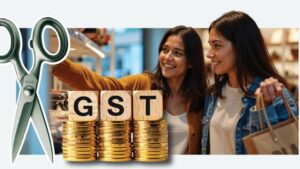Under the Government of India, Export Promotion Councils (EPCs) are non-profit organisations responsible for developing and promoting the export industry of India. There are 14 EPCs (covering various product categories like chemicals, cashews, sports goods, pharmaceutical, leather, etc.) under the administrative control of the Department of Commerce. On the other hand, under the Ministry of Textiles (MoT), 11 EPCs are individually representing all segments of the textiles and apparel sector. These 11 EPCs are AEPC, EPCH, SRTEPC, TEXPROCIL, HEPC, JPDEPC, PDEXCIL, CEPC, ISEPC, WIEPC and WWEPC.
As per MoT, these councils work in close cooperation with the Ministry of Textiles and other Ministries to promote the growth and export of their respective sectors in global markets. Organising various sourcing fairs and exhibitions and standalone shows in India and in overseas markets to enhance exports and access new markets is one of their major tasks. Indeed, these EPCs are also meant to work as a bridge between the Government and the industry.
But in the changed scenario, when businesses in textile and apparel industry are facing consolidation and industry needs more collaborative efforts and lobbying stronger than ever, it will be in favour of the industry to consolidate these 11 EPCs into one and have different departments, instead of different EPCs within the new body. Leading apparel exporter Jagdish Hinduja, who is also the MD of Gokaldas Images, recently raised this issue strongly.
Time and again, various senior ministers have reiterated, off the record as well as on it, that they can’t provide support to the industry all the time. It can make focused and policy interventions, help the sector/industry in its nascent stages and start-up level, help them grow, check the unfair practices, but can’t be seen providing support all the time.
India has been struggling to get its national textile policy for more than 6 years now. The country’s textile and apparel export has also been stagnant since few years. Yes, global conditions are also responsible for all this, but strong efforts can bring better results.
| Products | 2015-16 | 2016-17 | 2017-18 | 2018-19 |
| Textile & Apparel | 35,995 | 35,372 | 35,666 | 36,627 |
| Handicrafts | 3,293 | 3,639 | 3,573 | 3,804 |
| India’s overall exports | 262,290 | 275,852 | 303,376 | 329,536 |
| %T&C Exports of overall exports | 15% | 14% | 13% | 12% |
Source: DGCI&S INR Cr.
As far as logic regarding the interest of clash and structural issues is concerned, it can be avoided by setting a proper limit on the export of cotton, yarn and fabric, as well as by ensuring maximum focus on the export of readymade garments. Gone are the days when every product segment needed a separate EPC for promotion. Together as one body, the lobby will be stronger and the Government will be forced to pay much more attention.
Apart from strong and collective lobby, this concept will save a huge amount of money also. Most of these EPCs have their offices in different textile hubs. Rather than having dozens of offices, these EPCs have common infrastructure. Apparel House, Gurugram – having all facilities and being centrally located – is the best option in this regard. Similarly, trade shows can be organised at Expo Mart, Greater Noida, which is among the best places with all amenities to organise a world-class sourcing event with permanent showrooms to temporary booths (as per requirements).
As per the annual reports of leading EPCs, their expenditures on salaries are even more than they spent on export promotion activities.
For example, AEPC spent Rs. 17.33 crore on salaries and staff benefits in 2018-19, while export promotion and E&C expenses were Rs. 13.99 crore. Expenses on the latter decreased by 2.42 per cent as compared to what it was in 2017-18, while expenses on salaries had grown by 0.10 per cent. SRTEPC’s direct export promotion expenses, publication expenses incurred in India were Rs. 12 lakh for the year ending on 31 March 2019, while salaries, etc. were for Rs. 1.5 crore for the same period. Similarly, The Cotton Textiles Export Promotion Council (TEXPROCIL) has expenditure of Rs. 2.6 crore regarding employee benefit expenses. There are many more such huge expenses.
To promote the exports, these EPCs receive funding from the Government under the schemes like Marketing Development Assistance (MDA) and Market Access Initiative (MAI). In 2018-19, the Government spent Rs. 270 crore on MAI and has earmarked Rs. 300 crore for 2019-20.
Then there is the same selected bunch of stalwarts who get repeated terms after terms for the leadership roles of these EPCs. But there’s been no significant outcome of the efforts made by these associations towards the Indian textile industry. Apart from few exceptional sourcing shows (especially EPCH), most of the other events of these EPCs are not up to the expectations of the participants. Corruption in some of these EPCs and misuse of resources are also prevalent.
MSMEs contribute 49 per cent share, which is even higher in the case of textile and apparel. And this particular segment is deprived of leadership role in EPCs as well as the benefits from these EPCs.
Apparel Resources approached all 11 associations in this regard, and despite several reminders, most of them did not respond at all. Dr. A. Sakthivel, Chairman, AEPC, replied “We do not agree with your suggestion.”
It is worth mentioning here that the Government is also aware of the actual deliverables of these EPCs and has been working towards improving the processes since last year. Last year, NITI Aayog had decided to rank all these EPCs based on their performances.
In this more than ever challenging scenario, industry leaders should come together, work collectively for the growth of the entire industry. They have to leave their ‘privy purse’.







